Cephalotus follicularis, or as it’s more commonly known, the Albany pitcher plant. A really unique plant and the only plant in the Cephalotaeaea family. Lucky for me, I’m living in Albany one of the only places you can find these little beauties. Check out the little baby pitcher just forming to the right of the large one above.
These traps or pitchers are actually modified leaves, small roundish leaves you can see in the picture ( I have to be careful not to mix my pitchers and pictures) above.
These greener pitchers are generally growing in the shaded areas under shrubs and sedge grasses, while those more exposed to the sun turn different shades or red.
There’s also quite a difference between pitchers as they age, from young fresh smooth ones…
Through to wrinkly old battle scared one.
I’m going to copy and paste some bits of info about them from wikipedia, with a link at the end to the complete article. Read and learn if you feel inquisitive, or just scroll through the pretty pictures, or is that pitchers?
The trap leaves are up to 5 centimeters long, egg-shaped and liquid-filled pitfall traps that are open at the top. They lie on the substrate at an angle of 45° or they are sunk into it in the case of mossy substrates. The petiole is cylindrical and fused to the back of the upper edge of the trap.
Four very hairy ridges on the outside of the traps make it easier for crawling animals to reach the trap opening. The outer skin is completely covered with glands that secrete a liquid, presumably nectar.
A lid over the opening, an outgrowth of the petiole, spans the interior and protects it from rain, which could cause the pitcher fluid to overflow and wash out dead prey. It is curved, notched and ciliated at the edge, lacking a midrib. The inside is covered with short, downward-pointing hairs. The lid is alternately divided into white-translucent and dark red sections without chlorophyll. The translucent sections appear window-like, through which trapped flying insects try to escape, only to fall back into the pitchers afterwards.
The inwardly overhanging, thickened edge of the trap is surrounded by large, inward-pointing, claw-like teeth in between nectar glands. Immediately adjacent to this is an area of short, downward-facing papillae that make it difficult to climb back up. The rest of the inner wall of the cauldron is smooth, so that the prey slips into the trap and cannot climb out of it.
The upper third, or the upper half of the trap leaf, is finely beset with glands. In the lower part of the trap there are two kidney-shaped, red-coloured spots that are densely covered with larger glands. These glands most likely produce the liquid in the can, as well as the digestive enzymes and also absorb the nutrients from the prey.
These next two almost look like a male and female version.
I know, I know, gender stereo types. I shouldn’t. Back to the article.
After the pitcher is formed, the lid lifts from the peristome and the pitcher is ready to catch. Digestive fluid is already in the pitcher. The prey is attracted by nectar secretions on the bottom of the pitcher lid and between the grooves of the pitcher rim. This causes the prey to fall in and drown. The liquid contains enzymes that break down the nutrients, including esterases, phosphatases and proteases. In the majority of cases, ants are caught.
The plant is endemic to the southwest of Australia, in the coastal area northeast of Albany in a zone of around 400 kilometres between Augusta and Cape Riche. It is mainly found in cushions of Sphagnum on consistently moist but well-drained, acidic peat soils over granite, in seeping areas, along riverbanks or under so-called tussocks, grasses that grow in clumps.
The Australian pitcher plant is categorised as endangered by the IUCN due to its restricted distribution. However, there is no acute threat. Because parts of its distribution area are protected and the plants are common within this. Full article wikipedia
Did something chew it’s way out of this or into it? Anyway, enough for now. If you’re down on the south coast of WA, you have a healthy respect for snakes and bitey swamp insects, and don’t mind squelching your way through swamps and bogs, try and look them up, you might get lucky. You can find them most of the year.
I found all of the above pitchers over a couple of days in two different areas. One was a long trek through thick scrub, while on the second day I got lucky and found them beside a track.

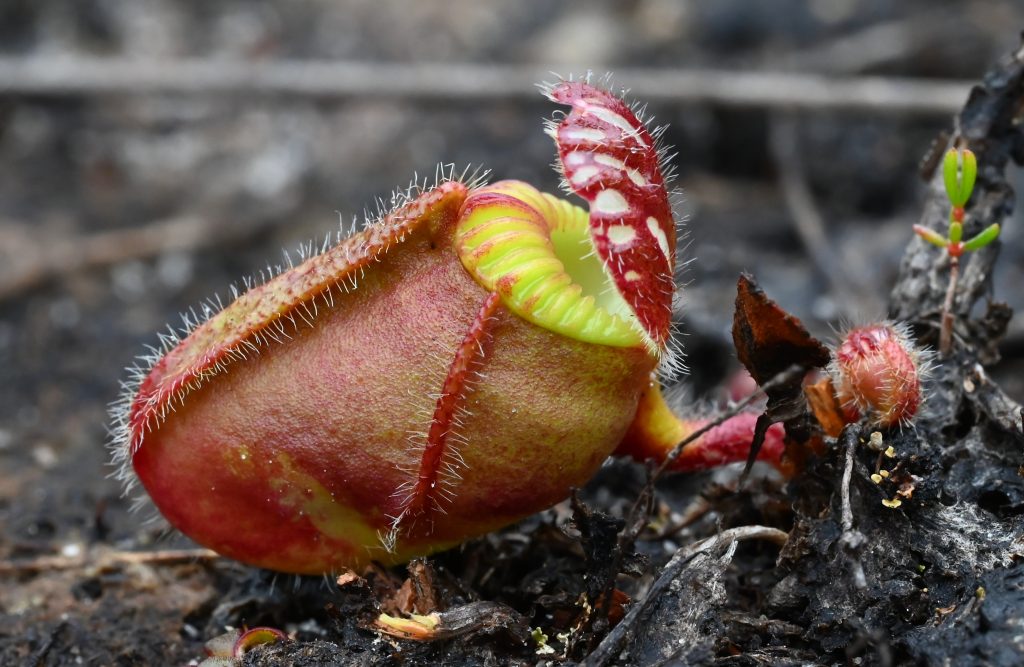


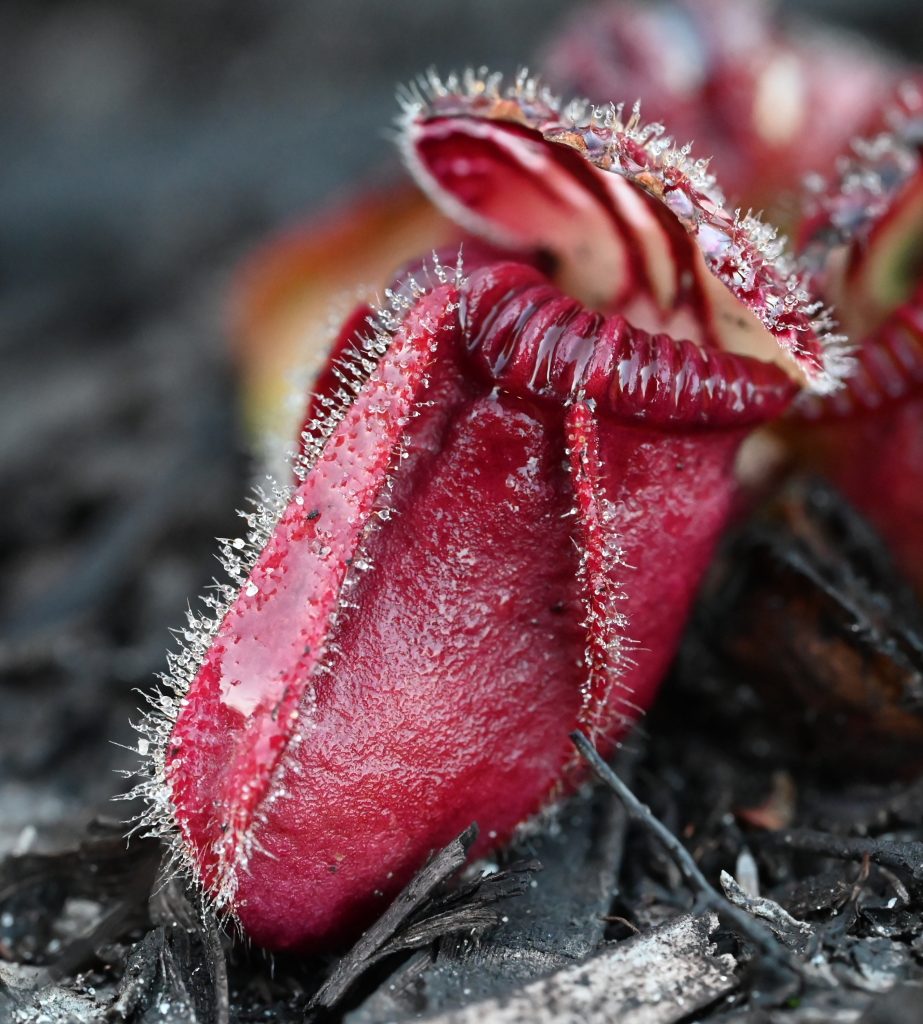

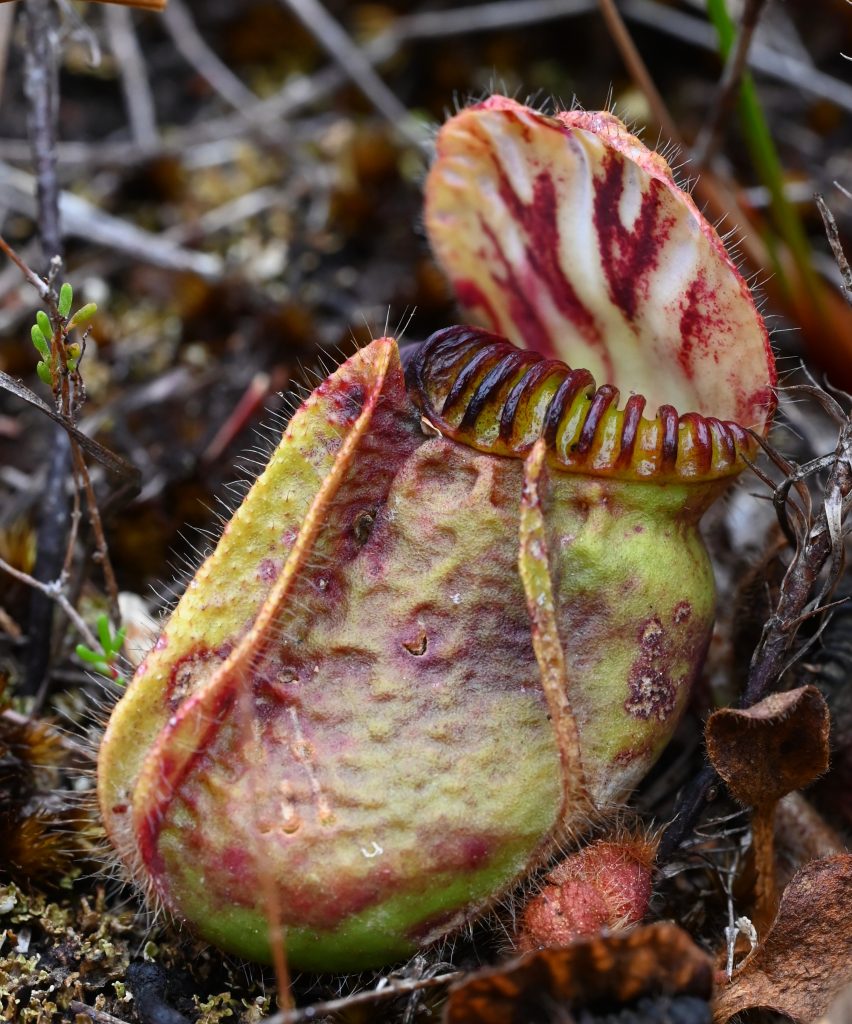
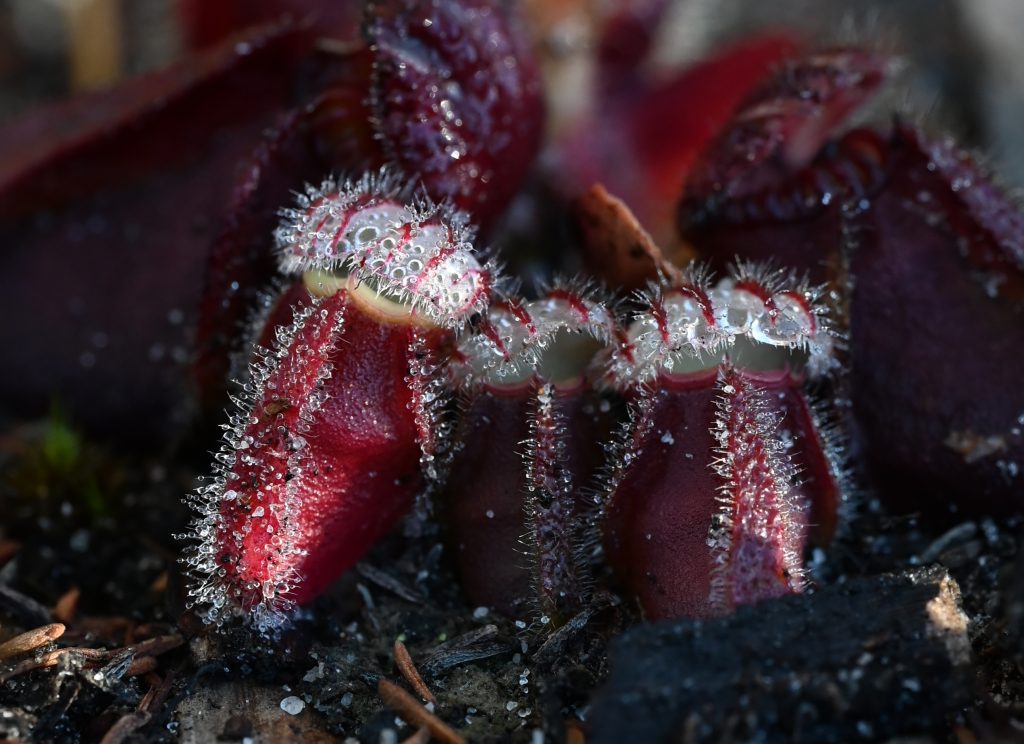
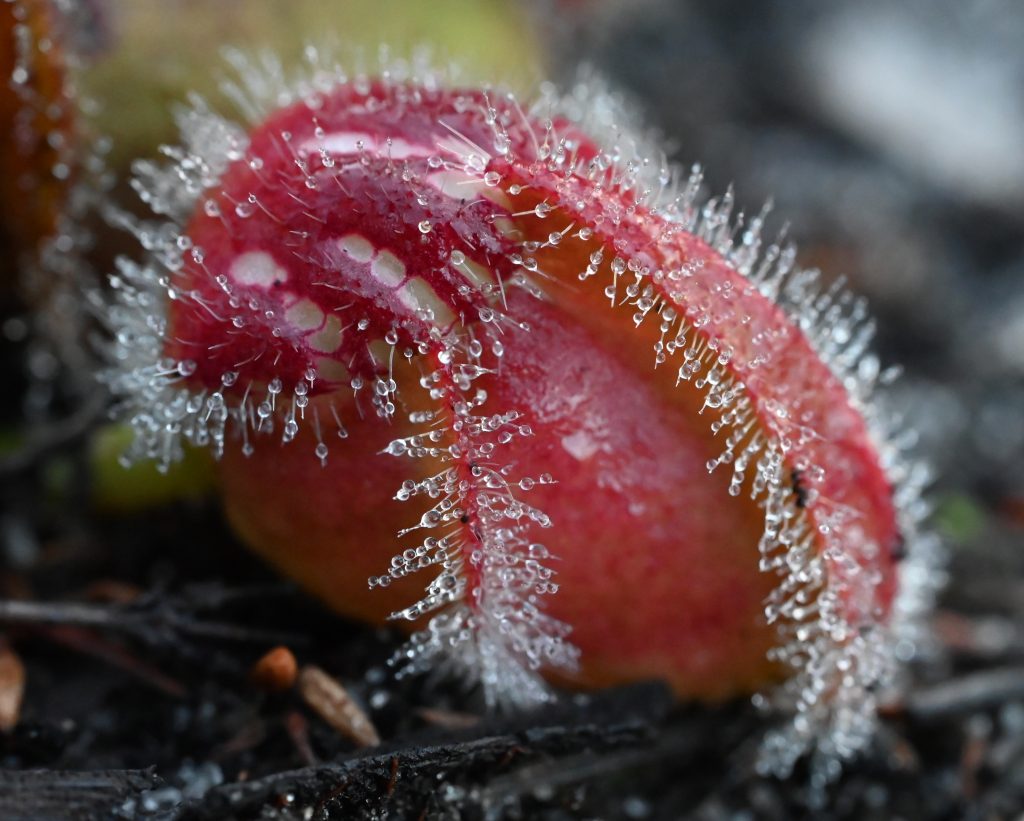
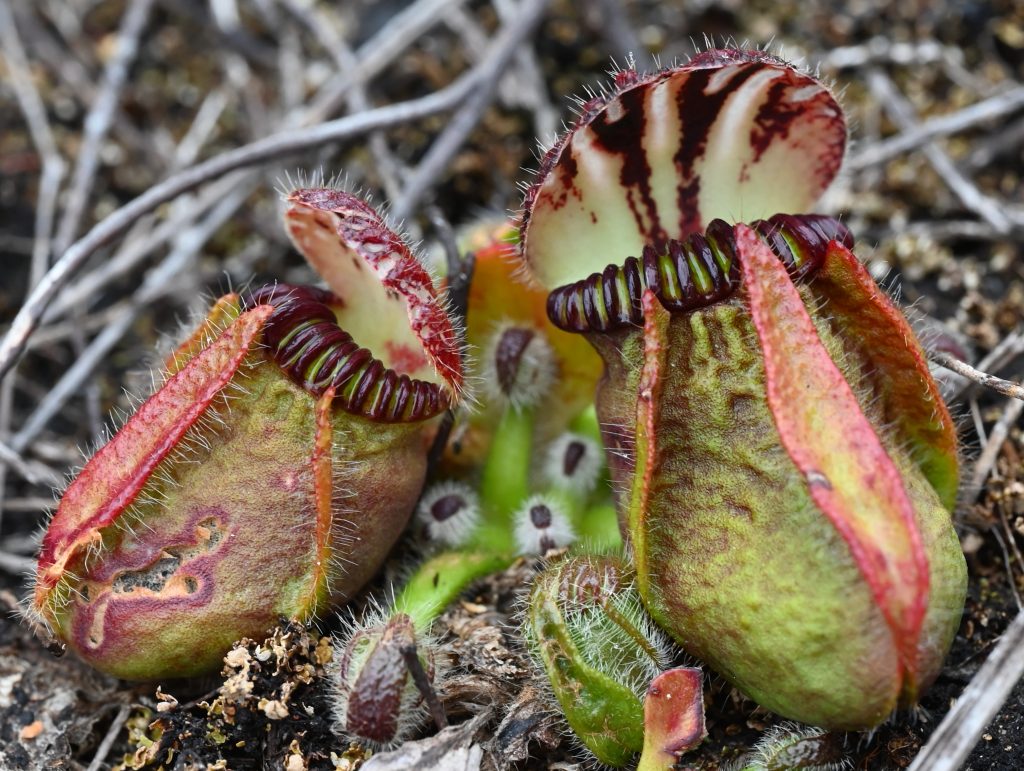
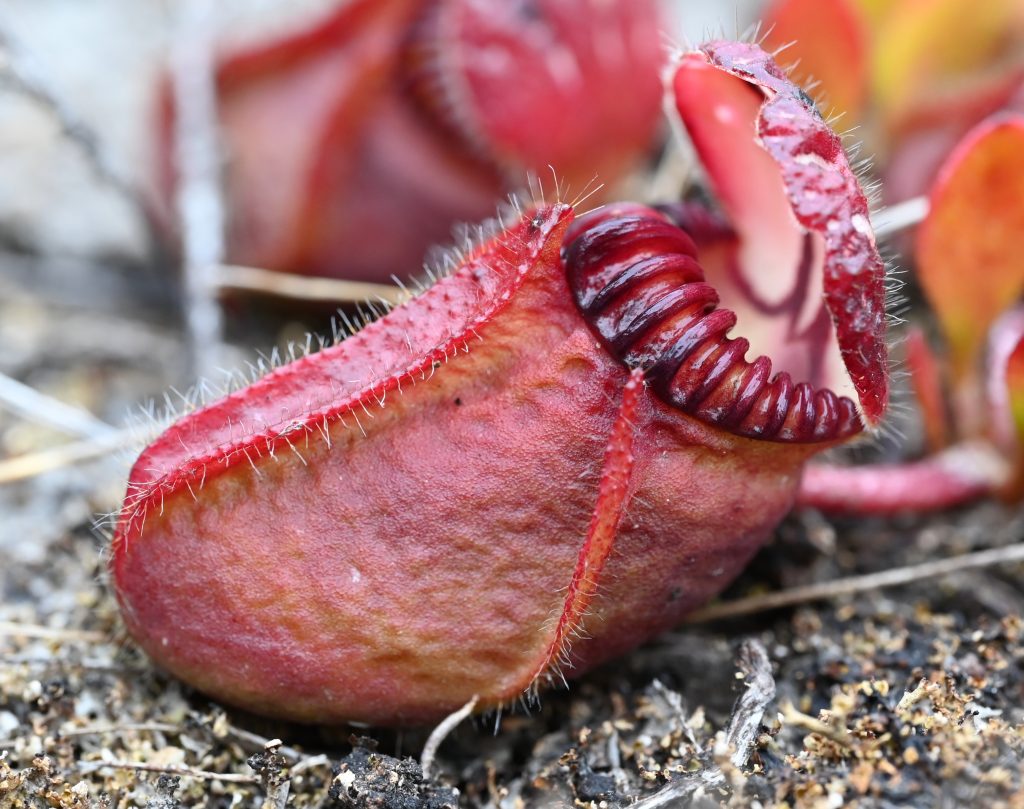
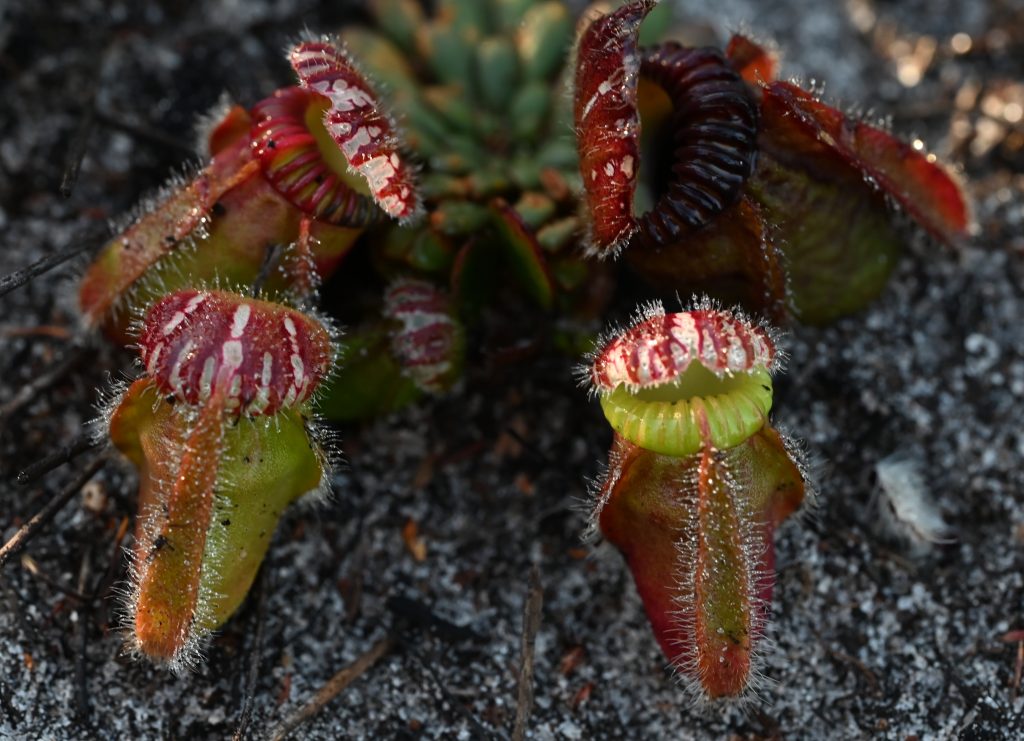
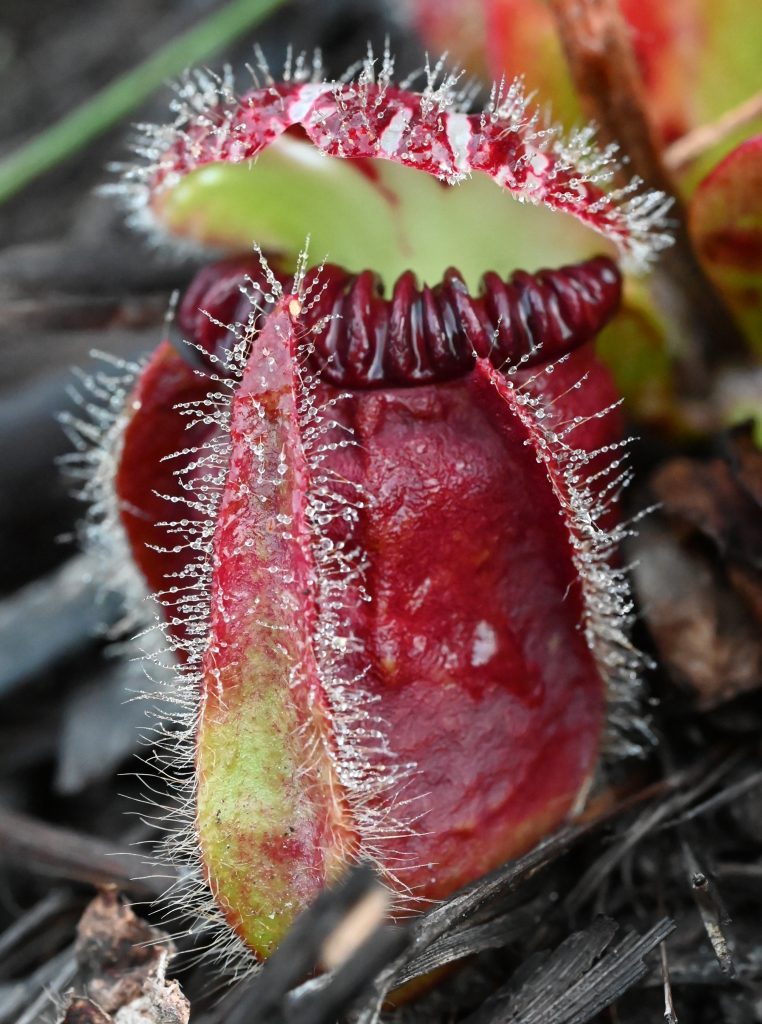
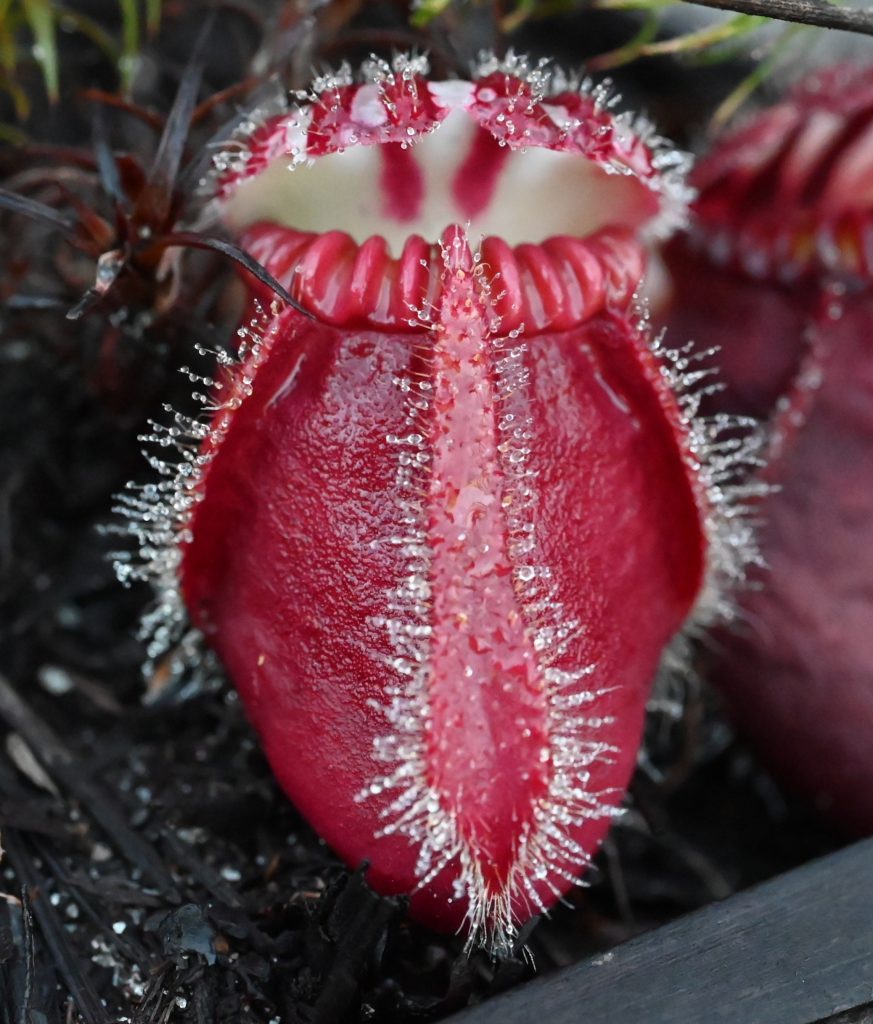
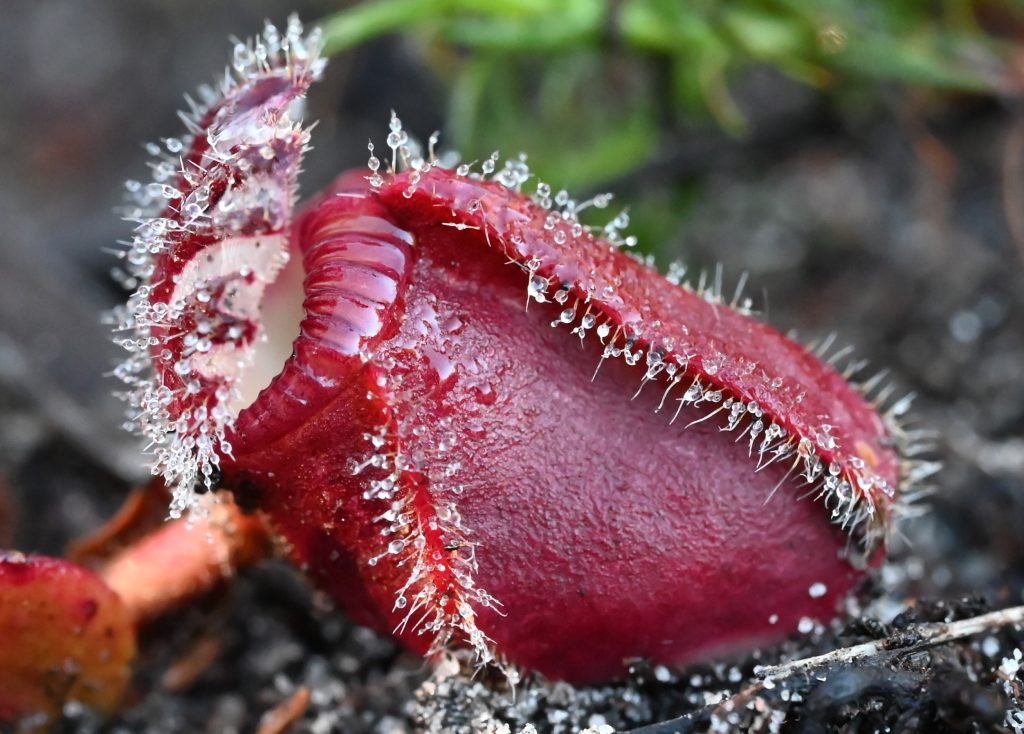
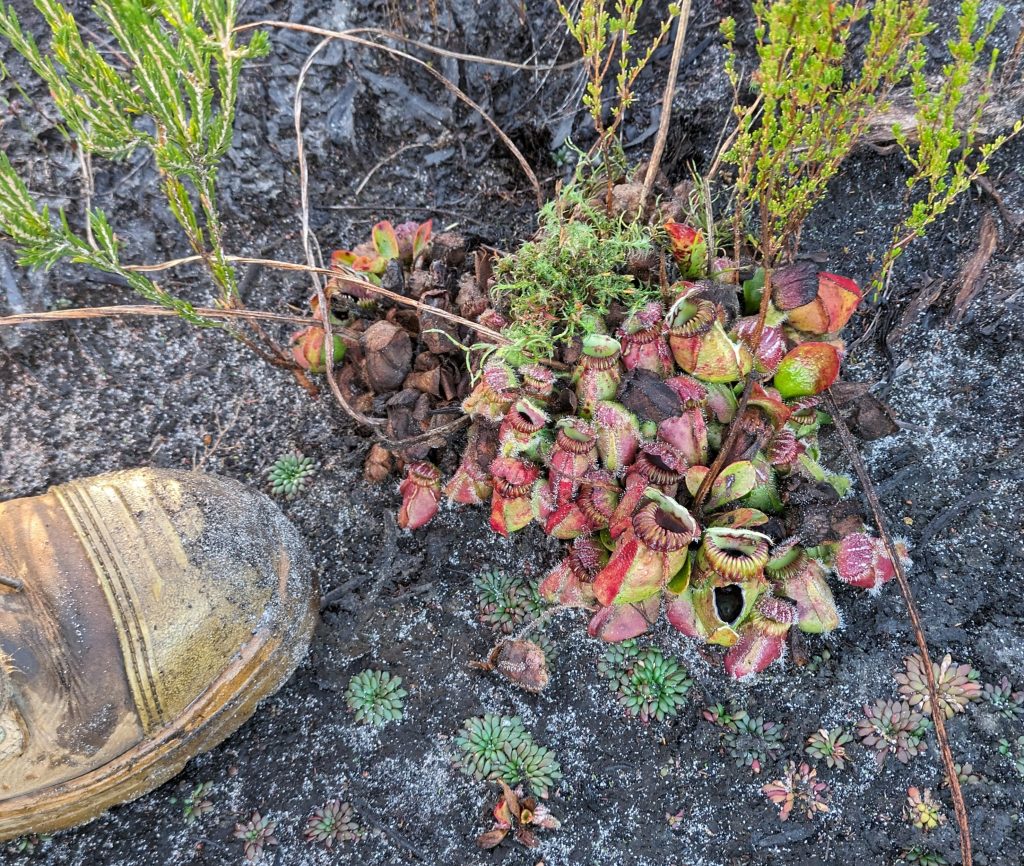
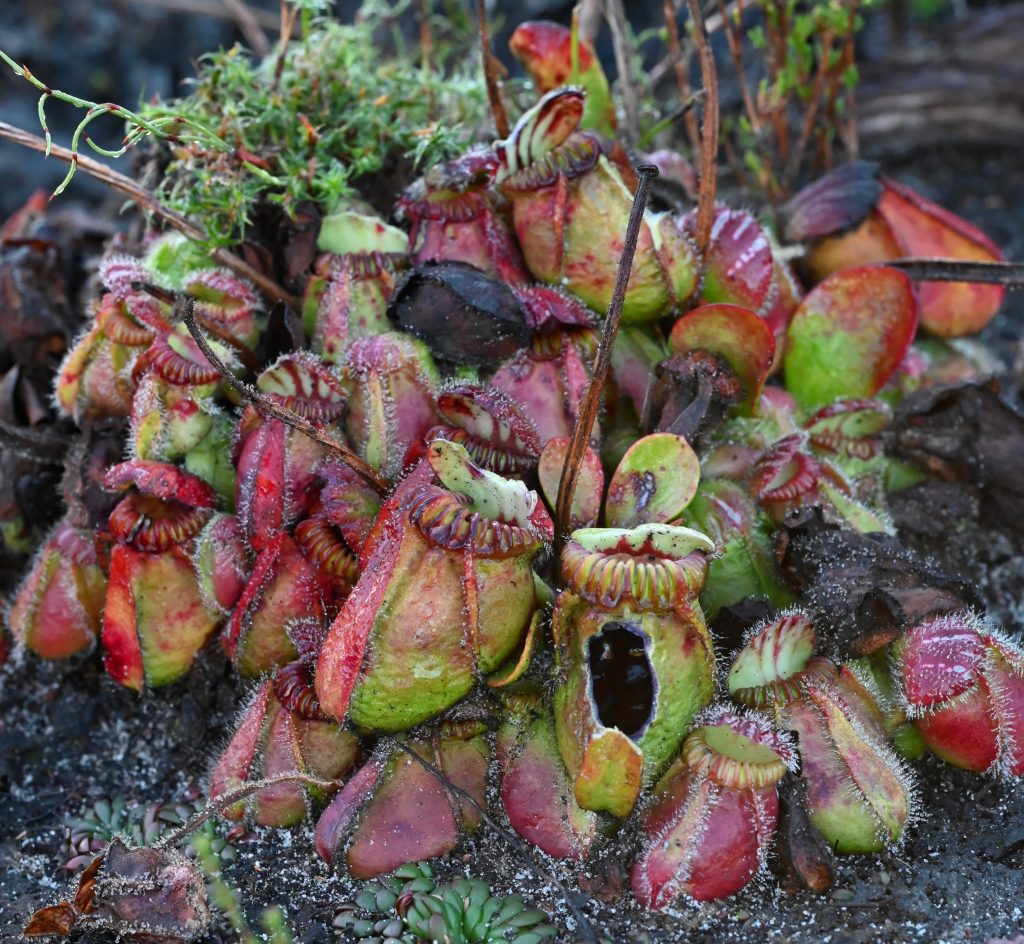
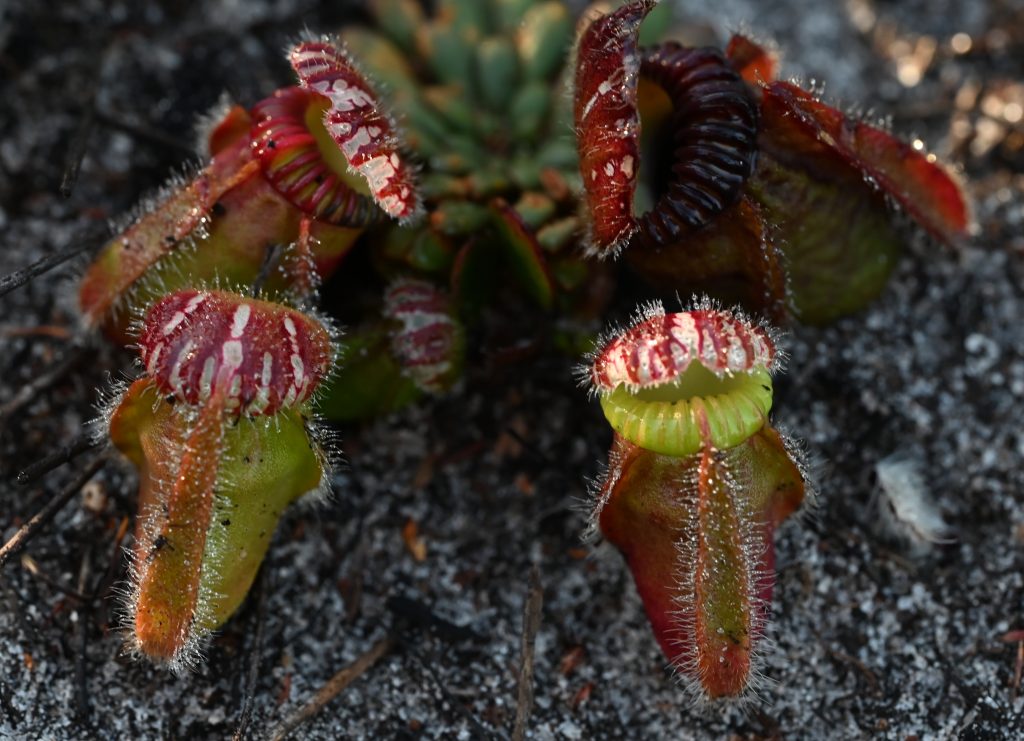
3 Comments
Thanks for another interesting article. Seems that Albany area has quite a few endemics – birds too. I wonder why that is 🤔
Very diverse flora and fauna, and segregated from other similarly high rainfall by lots of hot dry land…. perhaps..
so informative!! amazing flicks, thank you!